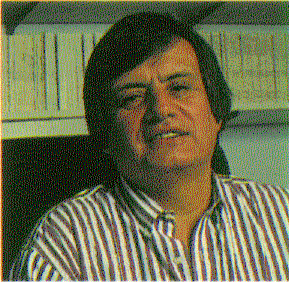
Spring/Summer 1999
Volume 6, Issue 2
Spring/Summer 1998
Volume
3, Issue 1
January 1995
Volume
2, Issue 4
October 1994
Volume
2, Issue 1
January 1994
Richard Tapia
Noah Harding Professor of Computational and Applied Mathematics and
Associate Director of Minority Affairs, Office of Graduate Studies,
Rice University;
Associate Director of Education and Human Resources,
CRPC
 Richard Tapia led the Rice/CRPC effort in the area of interior-point
methods for linear and nonlinear programming that received international
visibility. Tapia's research interests are primarily in the area of
mathematical optimization theory and iterative methods for nonlinear
problems. His current research is in the area of algorithms for
constrained optimization problems and interior methods for linear and
nonlinear programming.
Richard Tapia led the Rice/CRPC effort in the area of interior-point
methods for linear and nonlinear programming that received international
visibility. Tapia's research interests are primarily in the area of
mathematical optimization theory and iterative methods for nonlinear
problems. His current research is in the area of algorithms for
constrained optimization problems and interior methods for linear and
nonlinear programming.
As the Director of Human Resources and Education, Tapia has helped the CRPC make many strides in educational activities by designing, implementing, and directing such programs as the Spend a Summer with a Scientist program for minority science undergraduates and graduates, a summer university work program for minority high school students, and the Mathematical and Computational Sciences Awareness Workshop for mathematics and science teachers, counselors, and principals from K-12 schools with significant minority enrollment.
As the Associate Director of Minority Affairs for the Office of Graduate Studies at Rice, he has helped the university to increase the number of minority graduate students from five to 15 percent and to lead the nation in the number of minority Ph.D. students in applied mathematics. Also, in 1972, he helped to found what is now known as the Hispanic Association for Cultural Enrichment at Rice (HACER).
External positions for Tapia include being an editor for the SIAM Journal on Numerical Analysis from 1978 to 1991 and the Journal of Optimization Theory and Applications since 1981. Other outside work includes consulting for Lockheed Electronics, NASA, United States Army Strategy and Tactics Analysis Group, and the Aerospace Corporation.
Among his achievements, he was elected to the National Academy of Engineering (the first Mexican- American to receive this honor), was given the Hispanic Engineer National Achievement Award for Education and the George R. Brown Award for superior teaching, and named one of the 20 most influential leaders in minority math education by the National Research Council. This year he was selected Professor of the Year by the Association of Hispanic School Administrators of the Houston Independent School District. Most recently, he was awarded the Computing Research Association's Nico Habermann Award for his contributions to minority education in science, engineering, and mathematics (see "CRPC Awards and Honors").
Tapia has served on many national committees and boards including the Strategic Planning Task Force of the American Mathematical Society, the SIAM Board of Trustees, the Joint Policy Board on Mathematics Committee on Rewards and Recognition, and the National Research Council's Mathematical Sciences Educational Board. His speaking commitments in mathematics and outreach are also quite varied and extensive. He recently addressed the Texas State Board of Education and later gave the keynote address at the Conference on Applications of Mathematics Teaching National Meeting.
Tapia is also a member of several national organizations, including the American Mathematics Society, Society of Industrial and Applied Mathematics, Association for Computing Machinery, Mathematical Programming Society, and Society for the Advancement of Chicanos and Native Americans in Science (SACNAS). He earned his Ph.D., M.A., and B.A. in mathematics at the University of California at Los Angeles.
Table of Contents